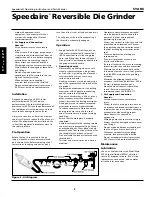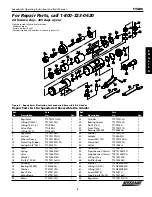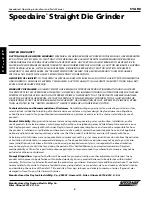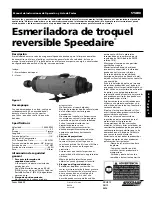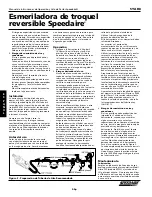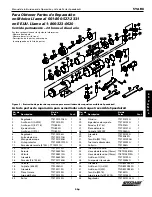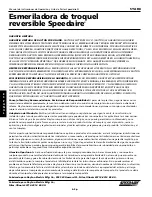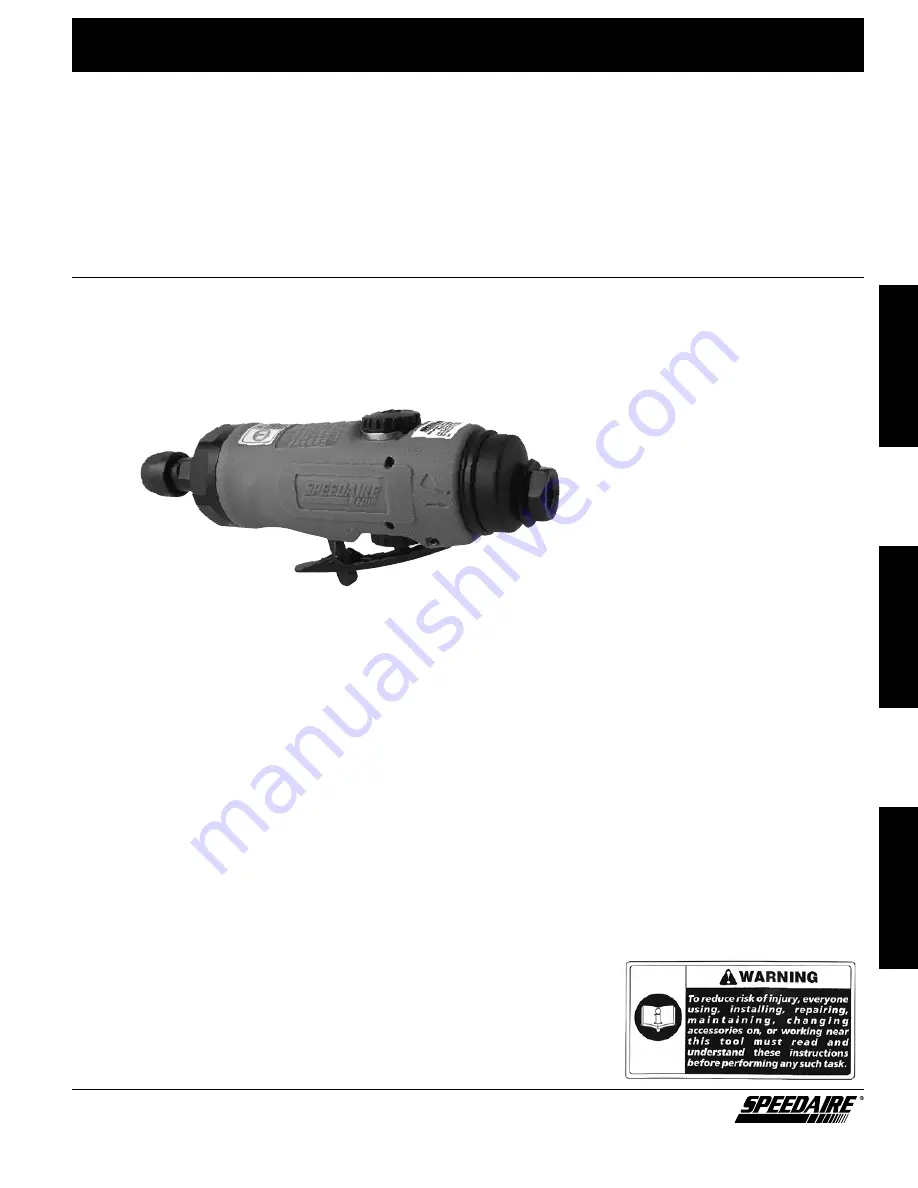
E
N
G
L
I
S
H
E
S
P
A
Ñ
O
L
F
R
A
N
Ç
A
I
S
Speedaire
®
Reversible
Die Grinder
Operating Instructions & Parts Manual
5YAR8
Please read and save these instructions. Read carefully before attempting to assemble, install, operate or maintain the product described.
Protect yourself and others by observing all safety information. Failure to comply with instructions could result in personal injury and/or
property damage! Retain instructions for future reference.
Form 5S623
Printed in Taiwan
04634
Version 0
KKU372
08/10
#626
Description
Speedaire® general duty straight die grinder is designed for cleaning tire molding, porting
and general high-speed polishing and grinding. Features energy efficient 1/2 hp motor,
1/4" collet, safety throttle and rear exhaust.
Includes:
1 - Die Grinder
2 - Wrenches
Figure 1
Unpacking
When unpacking the unit, carefully look for
any damage that may have occurred during
transit. Check for loose, missing or damaged
parts.
Specifications
Free Speed ....................................18, 000 RPM
HP ................................................................. 0.7
Exhaust ......................................................Rear
Length ..................................................... 7-1/2"
Collet Size .................................................. 1/4"
Average Air Consumption
@ 15 Second Run Time ...................... 3.35 CFM
Minimum Hose Size ............................3/8" I.D.
Air Inlet ...............................................1/4" NPT
Maximum air pressure ............................90 PSI
Weight ...................................................1.6 lbs.
General Safety Information
1.
For Additional Safety
Information Consult:
Your employer, union, and/or trade
association. US Department of Labor
(OSHA); www.osha.gov. “Safety Code
For Portable Air Tools” (B186.1)
2.
Entanglement Hazards
Keep away from rotating drive.
Do not wear jewelry or loose
clothing.
Choking can occur if neckwear
is not kept away from the tool and
accessories.
Scalping can occur if hair is not kept
away from the tool and accessories.
Avoid direct contact with accessories
during use.
Use only proper accessories designed
for use with pneumatic screwdrivers,
nutrunners, ratchets and pulse tools. 2.
3.
Projectile Hazards
Always wear impact-resistant eye
protection when involved with or
near the operation, repair or
maintenance of the tool or changing
accessories on the tool.
Be sure all others in the area are wearing
impact-resistant eye protection.
Even small projectiles can cause eye
injuries and blindness.
4.
Workplace Hazards
Slip/Trip/Fall is a major cause of serious
injury or death. Beware of excess hose
left on the walking or work surface. High
sound levels can cause permanent hearing
loss. Use hearing protection as
recommended by your employer or OSHA
regulation (see 29 CFR part 1910).
Maintain a balanced body position and
secure footing. Repetitive work motions,
awkward positions and exposure to
vibration can be harmful to hands and
arms. If numbness, tingling, pain or
whitening of the skin occurs, stop using
tool and consult a physician. Avoid
inhaling dust or handling debris from the
work process which can be harmful to
your health. Use dust extraction and wear
respiratory protective equipment when
working with materials which produce
airborne particles. This tool is not
intended for use in explosive atmospheres
and is not insulated for contact with
electric power sources.Potentially
explosive atmospheres can be caused by
dust and fumes resulting from sanding or
grinding.
Use dust extraction or suppression system
which is suitable for the material being
processed.
Some dust created by power sanding,
sawing, grinding, drilling and other
construction activities contains chemicals
known to the State of California to
cause cancer and birth defects or other
reproductive harm.
Some examples of these chemicals
are:
– Lead from lead based paints
– Crystalline silica bricks
and cement and other masonry
products
– And Arsenic and chromium
from chemically-treated rubber
Your risk from these exposures
varies, depending on how often
you do this type of work. To reduce
your exposure to these chemicals:
work in a well ventilated area, and


